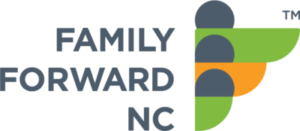Sick and safe leave refers to paid leave for employees to care for themselves or a family member during a temporary, short-term medical issue, such as illness; to attend to a critical safety need, such as domestic violence or sexual assault recovery; or for preventative health care, such as an annual well visit or a prenatal doctor appointment.
Benefits to Employers
- Increases productivity
- Does not lower profits or harm employment
- Increases retention, reducing turnover costs
- Reduces employee absenteeism
- Provides healthier work environment
- Reduces health care costs
- Workers recover from temporary disability, illness or injury more quickly and are less likely to relapse or be reinjured
- Increases loyalty Reduces likelihood of dangerous injury or death on the job
Benefits to Children
- Encourages use of preventative health care
- Children recover more quickly from illness and injury when parents are available to care for them
- Lowers risk for flu and other illnesses by encouraging children to stay home until they are well
- Allows workers to care for themselves and their children while in crisis situations, when children and parent health and well-being can be severely impacted. For example, children who experience domestic violence face a host of short- and long-term health issues, and safe leave removes concerns about losing a job while trying to leave a violent spouse or partner.
Benefits to Parents/Families
- Encourages use of preventative health care
- Workers recover from disability, illness, or injury more quickly
- Lowers risk for flu and other illnesses by encouraging parents to stay home until they or their children are well
- Allows workers to care for themselves and their children while in crisis situations, when children and parent health and well-being can be severely impacted. For example, children who experience domestic violence face a host of short- and long-term health issues, and safe leave removes concerns about losing a job while trying to leave a violent spouse or partner.
- Reduces financial strain from chronic illness or injury.
Range of Practices in the United States
Nearly one in three workers—and seven in 10 low- wage workers—do not have access to paid sick leave through their employer.
A 2017 Bloomberg BNA survey shows that 37 percent of employers who offer sick leave have policies that include safe leave for victims of crimes, domestic violence, assault, or stalking.
As of 2015, federal contractors must provide at least seven days of paid sick and family medical leave to employees for preventative care, an existing health condition, illness, or injury.
The US is one of the few developed, industrialized nations that does not require paid sick leave by federal law.
Eleven states, along with 33 jurisdictions and the District of Columbia, have a law requiring employers to offer paid sick leave to employees. Other states, such as Georgia and Minnesota, have a “kin care law” that requires employers who offer paid sick leave to their employees to allow employees to use that time to care for family members. The state of Montana doesn’t have a sick leave law or a kin care law.
